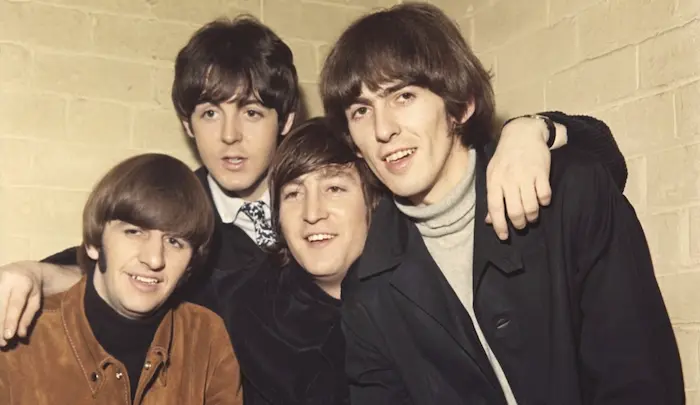Psychedelic rock is one of the most unique and influential genres in the history of modern music. Originating in the 1960s, this genre pushed boundaries and explored new soundscapes that were unlike anything that came before. Psychedelic rock songs often combine distorted guitars, experimental sound effects, and lyrics that reflect the mind-altering experiences of the time. This genre is a celebration of creativity, offering listeners a vivid, dream-like escape into a world of swirling sounds and colors.
The psychedelic rock movement played a pivotal role in the cultural revolution of the 1960s, with artists reflecting the changing attitudes toward music, politics, and personal freedom. Over the years, the genre has continued to influence countless artists in various genres, making its mark on modern music. Whether you are a long-time fan of psychedelic rock or a newcomer, this article will take you through some of the best tracks that define the genre. These songs are a perfect starting point for anyone interested in the swirling, mind-expanding world of psychedelic music.
6 Essential Psychedelic Rock Tracks to Explore
1. “Purple Haze” by Jimi Hendrix
“Purple Haze” is arguably one of the most iconic psychedelic rock songs ever created. Released in 1967, it is often associated with the height of the psychedelic era. Jimi Hendrix’s guitar work on this track is legendary, with distorted riffs that sound both haunting and otherworldly. The lyrics, famously said to be inspired by Hendrix’s own experiences with mind-altering substances, are surreal and poetic, creating a sense of disorientation. The song’s atmosphere is thick with psychedelic effects, and its overall tone encapsulates the feeling of the era perfectly. With its electric guitar solos and unique sound, “Purple Haze” remains a timeless anthem in psychedelic rock.
2. “Tomorrow Never Knows” by The Beatles
One of the most groundbreaking tracks in the psychedelic rock genre, “Tomorrow Never Knows” from The Beatles’ Revolver album is a masterpiece of experimentation. Released in 1966, the song features looped tape effects, drones, and unconventional instruments, making it a revolutionary track at the time. Its lyrics, inspired by Timothy Leary’s interpretation of the Tibetan Book of the Dead, explore themes of consciousness, life, and the unknown. The track’s hypnotic rhythm and otherworldly sound effects perfectly capture the essence of the psychedelic experience, making it one of The Beatles’ most influential songs and a cornerstone of psychedelic rock.
3. “White Rabbit” by Jefferson Airplane
“White Rabbit,” released in 1967, is one of Jefferson Airplane’s most famous tracks and a quintessential example of psychedelic rock. The song blends surreal imagery and literary references, drawing from Lewis Carroll’s Alice’s Adventures in Wonderland. With its dramatic build-up, the song’s lyrics address themes of altered states of consciousness and the search for deeper meaning. Grace Slick’s powerful vocals are accompanied by a moody and atmospheric musical arrangement, which crescendos into a memorable climax. “White Rabbit” remains a defining track of the psychedelic era, its eerie vibe and thought-provoking lyrics making it a timeless classic.
4. “The End” by The Doors
“The End” by The Doors is a haunting and ambitious piece that exemplifies the darker side of psychedelic rock. Released in 1967 on The Doors debut album, the song’s eerie atmosphere and hypnotic rhythm draw the listener into an intense emotional landscape. With Jim Morrison’s brooding vocals and the band’s experimental instrumentation, “The End” captures a sense of existential reflection and psychological depth. The track’s intricate structure, which gradually builds in intensity, explores themes of death, life, and the unconscious mind. Its bold use of symbolism and its unconventional approach to song structure make it one of the most powerful and influential psychedelic rock songs.
5. “See Emily Play” by Pink Floyd
Pink Floyd’s early work was heavily influenced by the psychedelic movement, and “See Emily Play” is one of the band’s most well-known tracks from this era. Released in 1967, this song is a whimsical and colorful journey, featuring dreamy melodies, swirling organ lines, and an overall sense of childlike wonder. The song’s lyrics, penned by Syd Barrett, are both playful and surreal, capturing the spirit of the psychedelic experience. “See Emily Play” helped establish Pink Floyd as a key figure in the genre, showcasing their ability to blend traditional rock elements with experimental sounds. It remains one of the band’s most iconic early songs.
6. “Eight Miles High” by The Byrds
Released in 1966, “Eight Miles High” by The Byrds is considered one of the first psychedelic rock songs. The track’s jangly guitar sound and soaring, melodic lines set the stage for the genre’s evolution. The song’s lyrics are thought to be inspired by both the physical and metaphorical journey of transcending earthly constraints, with references to the experience of flying and expanding one’s mind. With its bold use of eastern musical influences and innovative guitar work, “Eight Miles High” pushed the boundaries of what rock music could sound like. It remains one of the most influential tracks in the genre.
See Also: 15 Flashy Glam Rock Songs Revealed
Conclusion
Psychedelic rock is a genre that captures the essence of the 1960s counterculture and its experimentation with music and consciousness. From the groundbreaking innovations of The Beatles and Jimi Hendrix to the dark, hypnotic rhythms of The Doors and Pink Floyd, the tracks mentioned in this article represent the diversity and creativity of psychedelic rock. These songs push the boundaries of traditional rock music, blending surreal lyrics with experimental sounds and rhythms that transport the listener into an altered state of mind. Whether you’re a longtime fan or new to the genre, these tracks will give you a deeper understanding of why psychedelic rock remains one of the most influential genres in music history.
Related Topics
Which Artist First Successfully Combined Folk Music and Rock Music?

